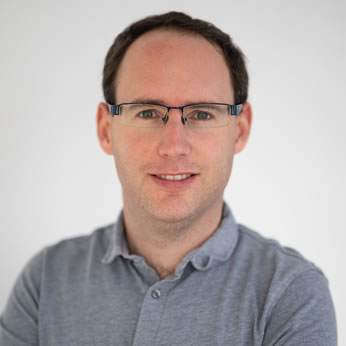Electrifying Nature – exploring different types of charge transfer processes across biological materials


Electrifying Nature – exploring different types of charge transfer processes across biological materials

Our group is dedicated for understanding the various charge transfer properties in biology. Biological charge transfer is one of the most fundamental processes in nature, and it is the driving force for our respiratory system. In our group we divide our research to two types of charge carriers, electrons and protons. In order to study the transfer properties we attach a charge donor to the biological material (peptide, protein or membrane), and we follow the charge transfer in-vitro mainly by fast spectroscopy. The group is equipped with state-of-the-art laser system that is capable to detect fast charge transfer processed on the time order of few femtoseconds.
An additional research line of the group is to use the efficient charge transfer capabilities of biological materials for the design of new biomaterials for bioelectronics devices. In here we are using electronic devices to measure both electron and proton conductance across the biomaterials from a single monolayer of the protein/peptide or a membrane up to macroscopic polymers that are made solely by proteins and peptides. One of the end goals of the group is to design new protein-based polymers with tuneable electrical conductance properties that will be used (with the help of our collaborators) as scaffolds for cardiac and neuronal tissue engineering applications.
Hello, my name is Nadav Amdursky. My academic journey started in Tel Aviv University, where I was studying for my undergrad degree (B.Sc) in Biotechnology. I continued in Tel Aviv for my PhD studies in an intriguing collaboration between Biology (Prof. Ehud Gazit) and Electrical Engineering (Prof. Gil Rosenman), working on the optoelectronic properties of peptide structures. After acquiring my PhD I’ve joined the groups of Prof. David Cahen and Prof. Mudi Sheves in Weizmann for my first post-doc, working on electron transport across proteins. At my second post-doc I’ve joined the group of Prof. Molly Stevens from Imperial College London to work on charge conduction across biological scaffolds. Even though my education was in Biology, the warm academic family of the Schulich Faculty of Chemistry in the Technion has decided to embrace me and from 2016 I’m a member in the Faculty. I have to thank my colleagues for tolerate my ignorance in organic chemistry, but in the same time I believe that I was able to insert new and exciting multidisciplinary research to the Faculty.
N. Amdursky, X. Wang, P. Meredith, D.D.C. Bradley and M.M. Stevens, Long-Range Proton Conduction Across Free-Standing Serum Albumin Mats, Adv. Mater. 28, 2692-2698 (2016).
N. Amdursky, Photoacids as a new fluorescence tool for tracking structural transitions of proteins: Following the concentration-induced transition of bovine serum albumin, Phys. Chem. Chem. Phys. 17, 32023-32032 (2015).
N. Amdursky, Electron transfer across helical peptides, ChemPlusChem 80, 1075-1095 (2015).
N. Amdursky, R. Simkovitch and D. Huppert, Excited-State Proton Transfer of Photoacids Adsorbed on Biomaterials, J. Phys. Chem. B 118, 13859-13869 (2014).
N. Amdursky, D. Marchak, L. Sepunaru, I. Pecht, M. Sheves and D. Cahen, Electronic Transport via Proteins, Adv. Mater. 26, 7142-7161 (2014).
N. Amdursky, D. Farber, C.A. Bortolotti, D.A. Dolgikh, R.V. Chertkova, I. Pecht, M. Sheves, and D. Cahen, Solid-State Electron Transport via Cytochrome C depends on Electronic Coupling to Electrodes and across the Protein, Proc. Natl. Acad. Sci. USA. 111, 5556-5561 (2014).
N. Amdursky, G. Shalev, A. Handelman, S. Litsyn, A. Natan, Y. Roizin, Y. Rosenwaks, D. Szwarcman, and G. Rosenman, Bioorganic Diphenylalanine Nanodots: From Alzheimer Core Motif to Nonvolatile Memory, Appl. Phys. Lett. Mater. 1, 062104 (2013).
N. Amdursky, I. Pecht, M. Sheves, and D. Cahen, Doping Human Serum Albumin with Retinoate Markedly Enhances Electron Transport Across the Protein, J. Am. Chem. Soc. 134, 18221–18224 (2012).
N. Amdursky, and D. Huppert, Auramin-O as a Fluorescence Marker for the Detection of Amyloid Fibrils, J. Phys. Chem. B 116, 13389-13395 (2012).
N. Amdursky, M. Molotskii, E. Gazit, and G. Rosenman., Elementary building blocks of self-assembled peptide nanotubes, J. Am. Chem. Soc. 132, 15632–15636 (2010).
| Name | Room | Phone | |
|---|---|---|---|
| Anna Yucknovsky | y.anna@campus.technion.ac.il | 203 | 3386 |
| Ramesh Nandi | nandi.ramesh@campus.technion.ac.il | 203 | 3386 |
| Yuval Agam | yuvalagam@campus.technion.ac.il | 203 | 3386 |
| Alex Burnstine | alexbr@campus.technion.ac.il | 203 | 3386 |
| Yoni Eshel | yonieshel@gmail.com | 203 | 3386 |
| Dr. Somen Mondal | somen.md@gmail.com | 203 | 3386 |
| Yuval Toren | yuvaltoren@campus.technion.ac.il | 203 | 3386 |
| Ambili R. V | ambili@campus.technion.ac.il | 203 | 3386 |
| Mohammad Foqara | mohammadessa@campus.technion.ac.il | 203 | 3386 |
| Ranu Satish Dhale | ranud@campus.technion.ac.il | 203 | 3386 |
| Yuval Gilad Barzilay | yuval.g@campus.technion.ac.il | 203 | 3386 |
| Amit Kumar Sarkar | sar@campus.technion.ac.il | 203 | 3386 |
| Zohar Klein | zohar.klein@campus.technion.ac.il | 203 | 3386 |
| Jiajun Feng | jiajun.feng@campus.technion.ac.il | 203 | 3386 |
| Yunxia Feng | yunxia.feng@campus.technion.ac.il | 203 | 3386 |
| Ziwen Zhao | ziwen.zhao@campus.technion.ac.il | 203 | 3386 |